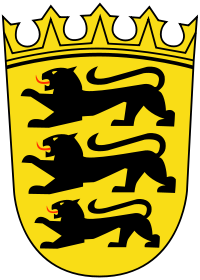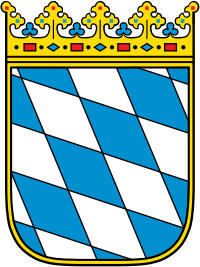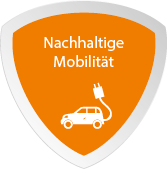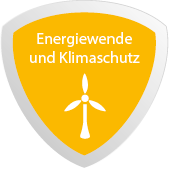Die nachfolgenden Inhalte stammen aus dem Kooperationsprogramm "Alpine Space programme" (genehmigt am: 17.12.2014).
Kurzbeschreibung
The development, testing and implementation of new low carbon technologies will be supported. The implementation phase and the unlocking of public/private investments should be a focus in the current period.
Förderziel
The results to be delivered by the projects reside initially in the promotion of awareness and understanding about the potentials and the implications of low-carbon mobility and transport options including the discussion on strategies, tools and operational modi among decision makers and key administrations in sectoral (e.g. energy, transport, housing) but also cross-sectoral departments (e.g. spatial planning) (output: strategic and implementation elements).
Fördergegenstände
Daten-, Informationsgrundlagen, Demonstrations-, Modell- und Pilotvorhaben, Information, Kommunikation, Beteiligung, Produktentwicklung, Markteinführung, Strategieentwicklung, Konzept-, Teilkonzepterstellung, Vernetzung, Kooperation, Wissenstransfer
Zuwendungsempfänger
Local, Regional and National Public Authorities; Agencies; Infrastructure and (public) service providers; Higher education institutions; Business support organisations; Enterprises, including SME; Interest groups including NGOs.
Förderfähige Gebietskulisse
In Bayern: Oberbayern und Schwaben
In Baden-Württemberg: Tübingen und Freiburg
Kooperationsmöglichkeiten bestehen mit folgenden Staaten: Österreich, Frankreich, Italien, Liechtenstein, Slowenien und der Schweiz.
Achtung: Bitte prüfen Sie im Kooperationsprogramm (KP, CP) welche Teilräume der Staaten förderfähig sind.
Art der Unterstützung
non-repayable grant
Beschreibung
Actions are assigned to Programme-Part "Low Carbon Alpine Space"
Indicative Actions to be supported are:
- Set up transnational frameworks, platforms and networks for the identification of existing research initiatives (e.g. from JRC), innovation resources, developments in the field of relevant KET, potentials and obstacles in the fields of low-carbon mobility and transport (mapping of resources, studies, pilots and strategies on research and application needs, market and product development potentials, prerequisites and “soft” factors for implementation etc.).
- Develop policy networks, strategies, models and toolboxes (e.g. in relation to the implementation of relevant legal obligations such as Directive 2008/50/EC and the Clean Air Policy Package, creation of an Alpine Space climate footprint system, “carbon proofing” tools for integrated spatial development policies, sustainable urban mobility plans, strategies and processes etc.) for setting up local/regional low carbon model areas and regions including special needs areas such as nature protection regions.
- Set up networks for the ex-ante assessment of the maturity and the anticipated impacts and the monitoring of the outcomes of low carbon policies, technologies and applications. Foster the promotion of debate among stakeholders, governance and citizens, the generation of creative ideas and the provision of capacity development mechanisms.
- Set up, test and implement negotiation, mediation, participation and conflict resolution models and standards for the adoption and implementation of low-carbon policies, technologies and applications.
- Support the transfer and uptake of existing local/regional solution and instruments and shape a framework for capitalisation of on-going technological innovation for a more sustainable organisation of mobility and transport including inter-modality and ICT applications.
- Design and test operational, technological and funding models for low-carbon mobility and transport.
- Develop tools to better integrate/coordinate mobility and transport strategies and plans of regions.
Hinweis: Weitere förderrelevante Informationen zur Maßnahme finden Sie im Kooperationsprogramm (KP, CP), ab S. 38.
Zielgruppe
General public; Those groups listed under the caption “Zuwendungsempfänger”.
Zentrale Zuwendungsvoraussetzungen
Wichtige weitere Informationen zu Zuwendungsvoraussetzungen, wie z. B. die Mindestanzahl an Projektpartnern, finden Sie in den zugehörigen Unterlagen (siehe Link zu Downloads/Infos in der Kategorie Dokumente).
Auswahlverfahren
Projects will normally be selected in a two-step application procedure following calls for project proposals. Calls shall be launched regularly. Terms of reference (ToR) will be published for each call in which programme rules and expectations are set out. The application process will be carried out completely in an online system. Only applications being pre-selected by the Programme committee (PC) in step 1 of the application procedure (“expression of interest – EoI”) will be invited to submit a complete application form (AF) (step 2). In certain cases, e.g. for targeted calls for proposals with specific ToR, the programme may launch a one-step application procedure.
Assessment and selection: The Partner States ensure a clear, transparent and traceable evaluation by the Joint Secretariat (JS) and selection of projects by the PC. The criteria and details on the evaluation process (set out in the project implementation handbook) will be made available in the application documents.
Projektauswahlkriterien
The selection of projects will be carried out following a standardised assessment procedure (Article 12 of Regulation (EU) No 1299/2013). The objectives to be achieved are:
- Assess the relevance of a project proposal;
- Assess the feasibility of a project proposal;
- Define a transparent and objective basis for decision making on a proposal rejection or approval;
- Provide a base for communication and improvement among programme bodies and applicants.
The detailed assessment criteria will be laid down and made available to project applicants in the project implementation handbook (PIH).
Hinweis: Weitere förderrelevante Informationen zu den Projektauswahlkriterien der Maßnahme finden Sie ab S. 41 des Kooperationsprogramms.
Laufzeit
Start der Maßnahme: 01.01.2014
Ende der Maßnahme: 31.12.2023




